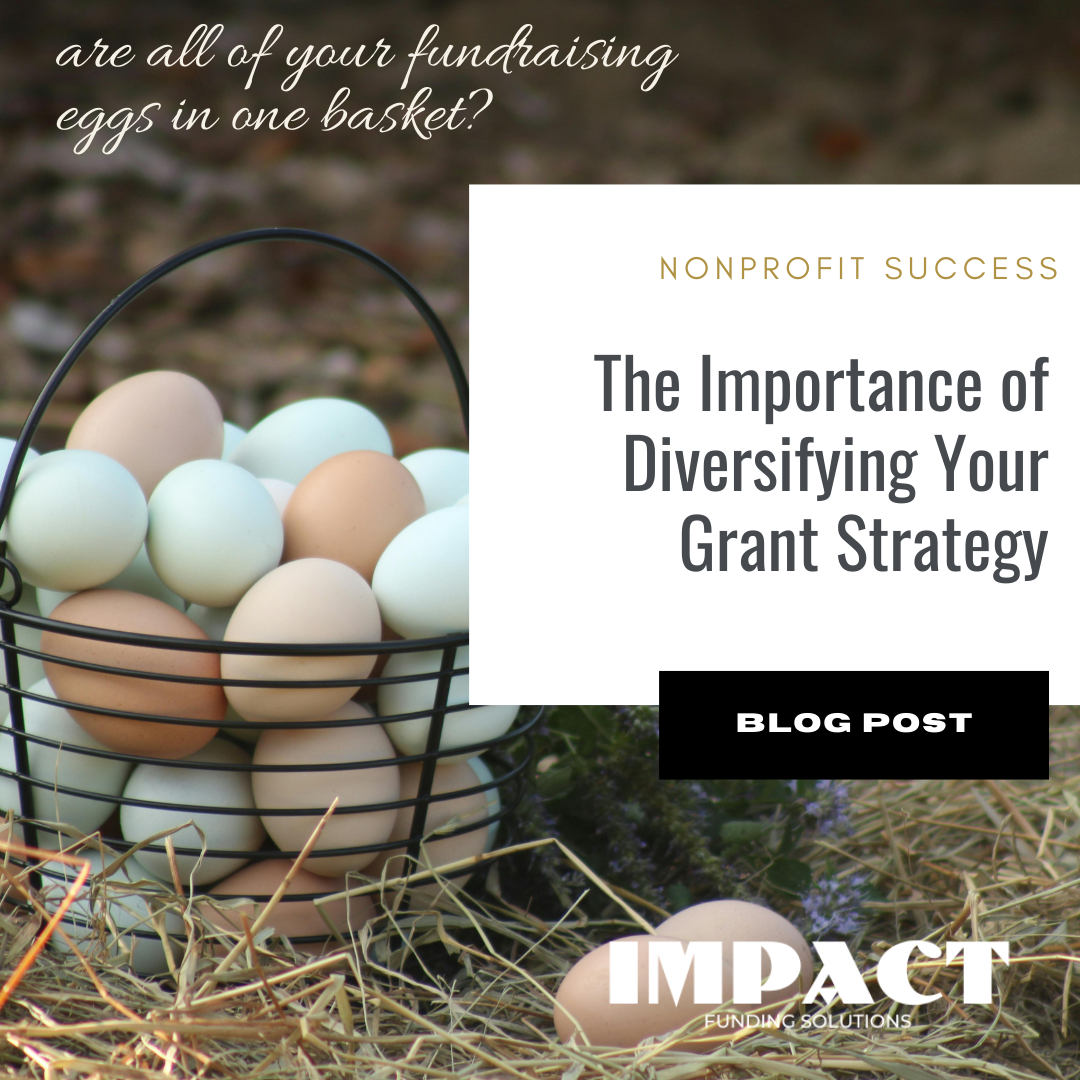The Importance of Diversifying Your Grant Strategy

The Importance of Diversifying Your Grant Strategy
In today’s climate of uncertainty, having a diversified grant strategy isn’t just a best practice — it’s a necessity for nonprofit survival. With the current U.S. administration making sweeping changes that impact federal funding, diversity, and social service programs, many nonprofits are feeling an unprecedented level of anxiety about their financial future. Relying too heavily on one source of grants — whether government, private foundations, or corporate giving — can leave your organization vulnerable when priorities shift overnight. The good news? By proactively building a broader, more resilient grant portfolio, nonprofits can create stability even in chaotic times. In this post, we’ll explore why diversification matters now more than ever, and simple steps you can take to strengthen your funding foundation for the long term.
Why Grant Diversification Matters
- Funding Priorities Change.
Funders — including government agencies and foundations — regularly adjust their focus areas. What gets funded this year may not be a priority next year. - Political and Economic Instability.
Executive orders, budget cuts, inflation, and social policy changes can cause large-scale shifts in available funding, especially for social services, education, and DEI initiatives. - Mitigating Risk.
If one funding source disappears, a diversified strategy ensures that your entire organization doesn’t unravel. - Growth Opportunities.
Different funders bring not just dollars but also visibility, credibility, and networks that can lead to more opportunities over time.
How to Start Diversifying Your Grant Strategy
1. Expand the Types of Funders You Target
Don’t rely solely on government grants or one or two big foundations.
Seek grants from:
- Local community foundations
- Corporate foundations (grocery chains, tech companies)
- Family foundations
- Faith-based or civic organizations
- Healthcare and insurance companies
- Banks and Credit Unions
Pro Tip: Local funders often have fewer applicants and a higher chance of success!
2. Balance Program-Specific and General Operating Grants
Many nonprofits focus only on grants for new programs. While program funding is important, securing general operating support allows you to strengthen your organization as a whole — including staffing, technology, and infrastructure.
3. Apply for Grants at Different Funding Levels
Mix small, medium, and large grants into your pipeline.
- Smaller grants ($2,000–$10,000) can often be secured faster and still make a meaningful impact.
- Larger grants ($50,000+) take longer but can fund transformational projects.
A healthy mix keeps funding flowing while you pursue bigger opportunities.
4. Map Out a 12-Month Grant Calendar
Having a structured grant calendar ensures you apply consistently throughout the year and aren’t scrambling when deadlines pop up.
Plan 4–6 submissions per month across different funder types and focus areas.
5. Strengthen Your Case for Support
A clear, compelling case for why your organization matters will help you attract a wider range of funders. Tailor your messaging to match each funder’s specific goals — but always stay rooted in your mission and impact.
Final Thoughts
In times of uncertainty, resilience comes from preparation.
By diversifying your grant strategy now, you can build a funding foundation that weathers political changes, economic shifts, and evolving funder priorities. The work you’re doing matters — and the right grant strategy will ensure you can continue serving your community for years to come.
If you’re feeling overwhelmed about where to start, we’re here to help!
At Impact Funding Solutions, we specialize in building customized, strategic grant plans designed to maximize your opportunities across all funding channels.
👉 Contact us today to learn more about how we can support your nonprofit’s future.

